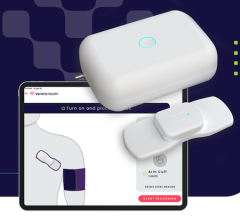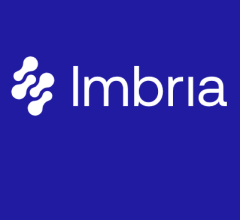
The Amvia Product Family
August 21, 2023 — The first implant in Europe of Biotronik’s latest pacemaker and CRT-P generation was conducted in early August by Prof. Dr. Jan De Pooter at the University Hospital Ghent in Belgium. The patient who received an Amvia Sky dual chamber pacemaker device was a 68-year-old man suffering from paroxysmal AV-block strongly limiting his physical efforts.
"The implantation went on straightforward and very smoothly," commented Prof. De Pooter after the procedure. "LBBAP enables pacing in a very natural, physiological way, benefiting the patient by offering physiological pacing and minimizing the risk for pacing-induced cardiomyopathy."
The University Hospital Ghent is the first clinic in Europe to implant an Amvia family system. As the first device certified for left bundle branch area pacing (LBBAP)1, Amvia fosters natural myocardial contraction patterns, designed to help reduce the risk of patients developing pacing-induced cardiomyopathy and its severe consequences. It is also the only system in the market to offer a myocardial contractility sensor and provide physiologic heart rates with Closed Loop Stimulation (CLS). Furthermore, Amvia automates many routine tasks during implantation, in-office follow-ups, remote monitoring, and MRI workflows, helping to reduce the burden of care2.
The Amvia family features Biotronik’s proprietary MRI Guard 24/7 technology, which uses always-on, dedicated sensors to automatically recognize when a patient enters an MRI field and then converts the device to MRI mode. The device returns to its permanent programming following the completion of the scan, eliminating any pre- or post-scan programming needs.3,4
"MRI Guard 24/7 presents a practical answer to real-life obstacles, aiming to enhance safety and efficiency for patients with CIED who require MRI access," said Prof. De Pooter. "The goal is to make the MRI process as seamless as possible, not just for patients but also for caregivers in the device clinic and MRI suite. By utilizing MRI Guard 24/7, the need for repeated visits to the clinic for pre- and post-programming is eliminated. Additionally, the device's ability to switch to MRI mode only during the scan reduces any potential patient discomfort."
"We are delighted to witness the successful market release of our latest development. This significant milestone serves as a testament to our ongoing commitment to driving advancements in the cardiovascular market, even after 60 years. Our innovative solutions, such as the Amvia family, continue to improve the lives of patients worldwide," says Dr. Andreas Hecker, President CRM/EP at Biotronik.
With patient-centric technologies that address both patients’ and caretakers’ needs, Amvia family’s comprehensive capabilities offer unique physiologic treatment, enhanced therapy, and increased workflow efficiency – so that more patients may benefit from more personalized care.
For more information: www.biotronik.com
References:
*1. BIOTRONIK Amvia Sky technical manual, Medtronic Azure XT DR MRI SureScan manual; Boston Scientific Accolade MRI technical manual; Abbott Assurity MRI user’s manual; MicroPort Alizea implant manual.
2. Garcia-Fernández FJ, Asensi JO, Romero R, et al. Safety and efficiency of a common and simplified protocol for pacemaker and defibrillator surveillance based on remote monitoring only: a long-term randomized trial (RM-ALONE). Eur Heart J. 2019; 40(23): 1837–1846.
3. Data on file.
4. Mullane S, Michaelis K, Henrickson C, et al. Utilization and programming of an automatic MRI recognition feature for cardiac rhythm management devices. Heart Rhythm. O2. 2021; 2: 132–137.
Related Content:
BIOTRONIK Receives FDA Approval For Next-Generation Family of Pacemakers


 October 28, 2025
October 28, 2025 









